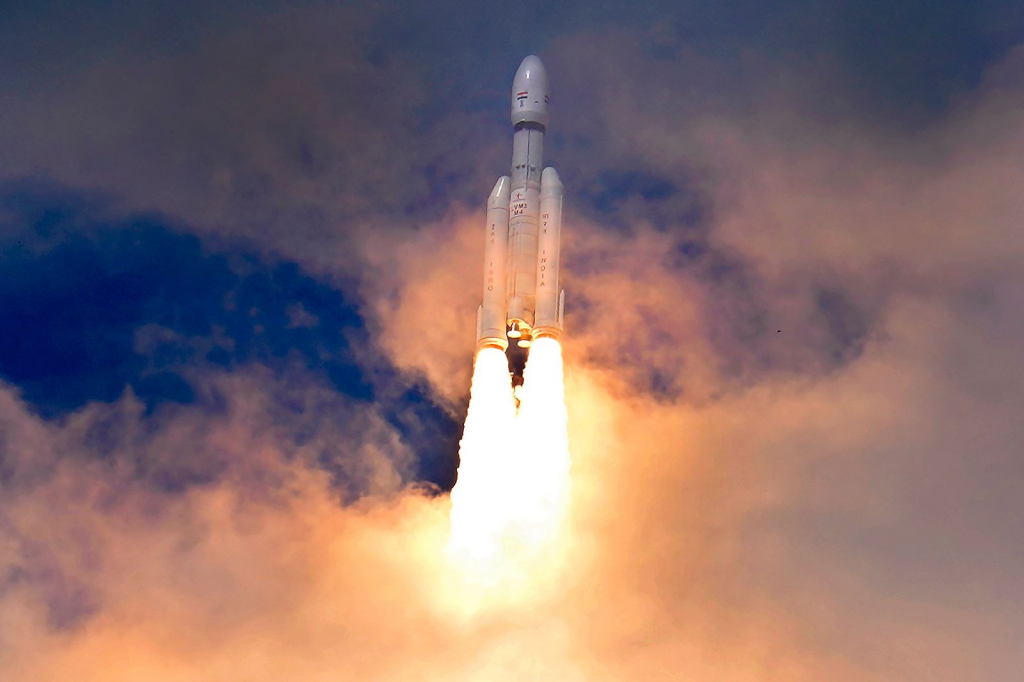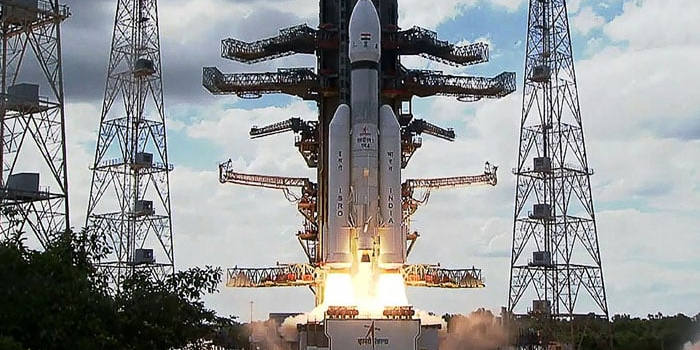On August 5th, Chandrayaan-3, the most recent lunar mission carried out by the Indian Space Research Organization (ISRO), made a significant advancement when it successfully entered lunar orbit. In order to get to this point, the spacecraft had spent a week orbiting the Earth several times in an elliptical cycle, ending in a slingshot maneuver that launched it into a translunar orbit, where it was sucked into the Moon’s gravitational attraction.
ISRO, in a groundbreaking move, released the first visuals of the Moon captured by Chandrayaan-3. These visuals, unveiled on X (formerly known as Twitter), provided a close-up view of the lunar surface, showcasing its cratered landscape from various angles. Launched on July 14th via the Launch Vehicle Mark 3 (LM-3) rocket, Chandrayaan-3 is now on course to achieve its ultimate objective: a soft landing on the Moon’s lesser-explored south pole, anticipated around August 23rd.

To execute this ambitious goal, ISRO has outlined a meticulous plan. A series of carefully calculated maneuvers will gradually decrease the spacecraft’s orbit, positioning it over the Moon’s poles. The first orbit-lowering maneuver took place on August 6th, with subsequent maneuvers planned for August 9th and beyond. These strategic adjustments will bring Chandrayaan-3 to a height of 62 miles above the intended landing site.
The spacecraft’s lander and rover will split from the propulsion module once it reaches this ideal height, starting a tense series of maneuvers for a safe touchdown. India will join the United States, the Soviet Union, and China as the first countries to make a soft landing on the Moon’s south pole if the mission is successful.
Chandrayaan-3’s mission consists of a lander and rover, both equipped with advanced scientific instruments aimed at deepening our understanding of the Moon’s enigmatic south pole. Once the lander releases the six-wheeled rover, weighing only 57 pounds, the solar-powered duo will have approximately 14 Earth days to explore and gather crucial lunar data. The south pole of the Moon is a tantalizing target for exploration due to its mysterious and unexplored nature. Scientific theories suggest that the region harbors substantial ice reserves within perpetually shadowed craters that have remained untouched by sunlight for billions of years, boasting temperatures as frigid as -334°F.
Chandrayaan-3’s endeavors hold the promise of shedding light on the early stages of the solar system’s formation while adding a unique Indian perspective to lunar exploration. As India navigates the challenges of these critical phases, the mission also aligns with NASA’s aspirations to explore the lunar south pole through its upcoming Artemis missions.


